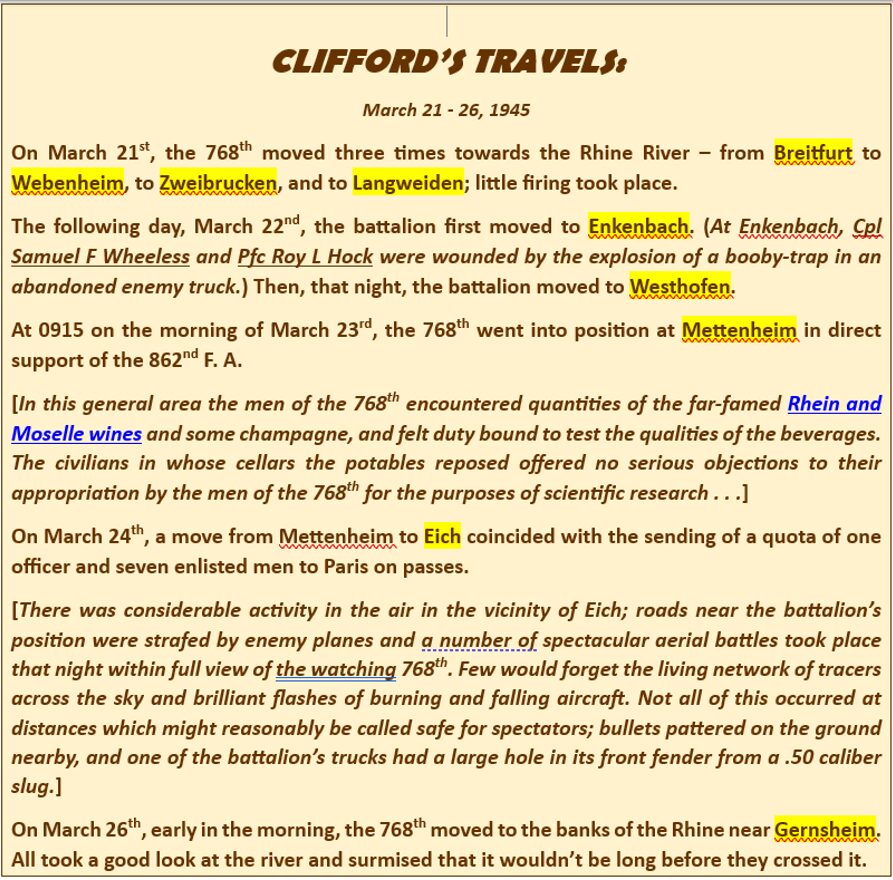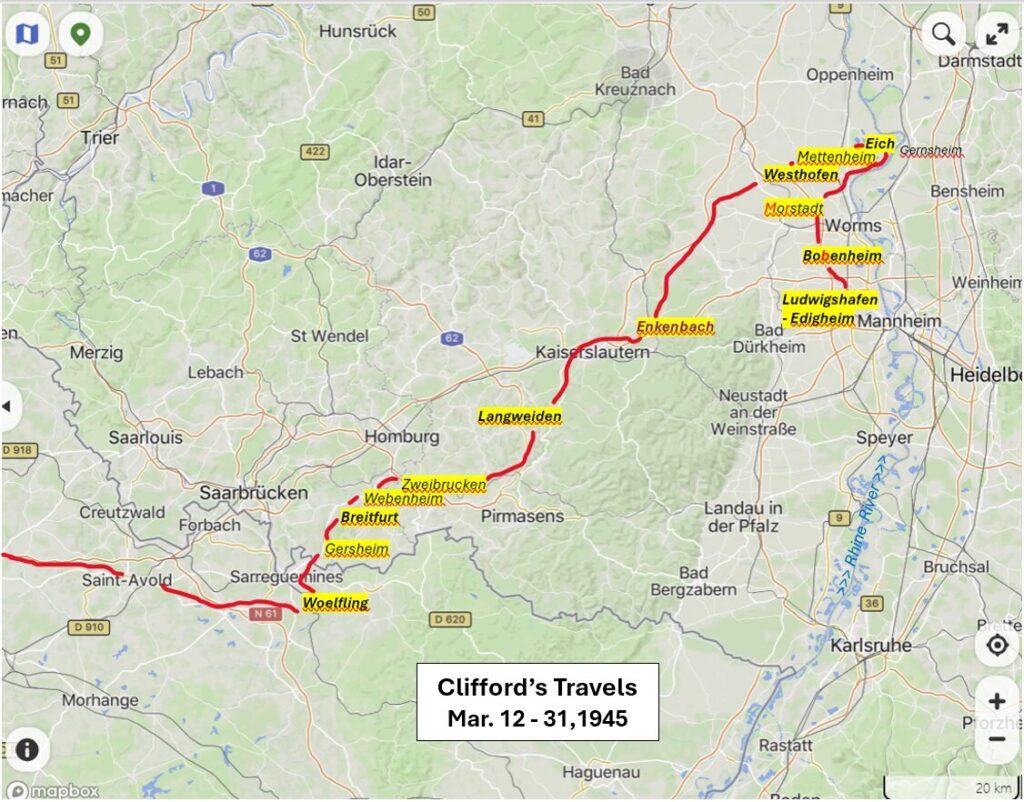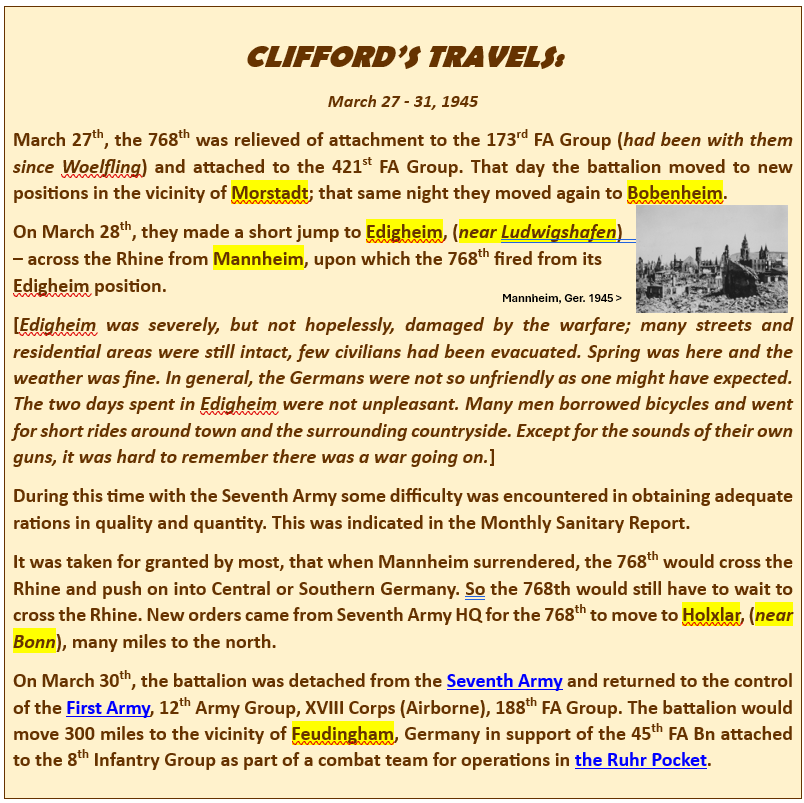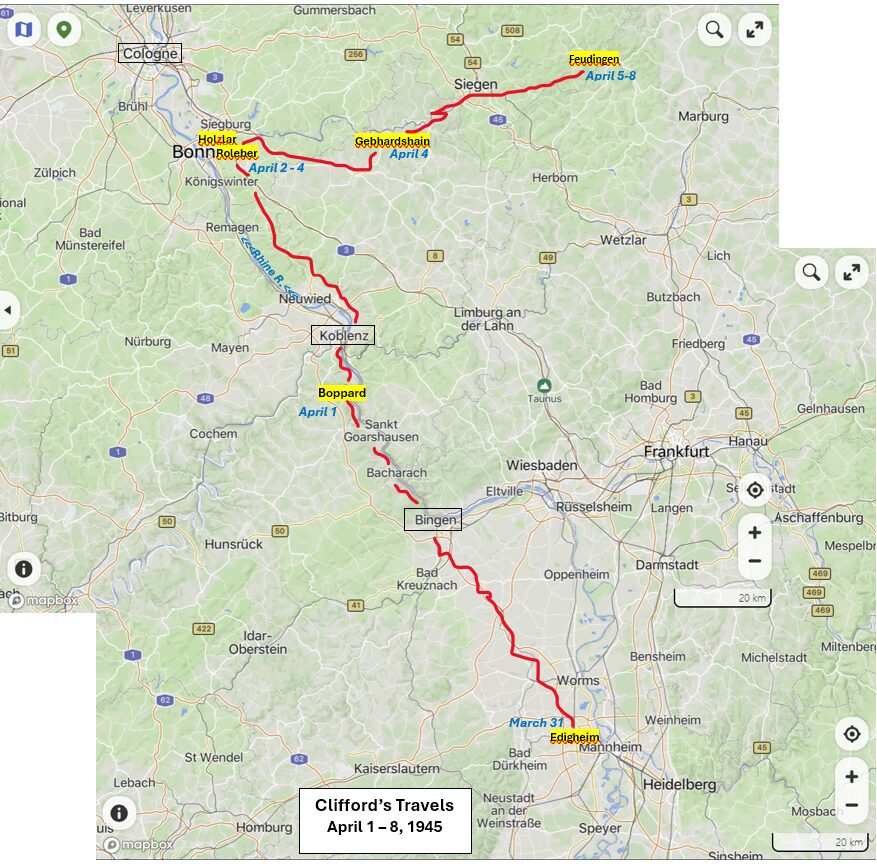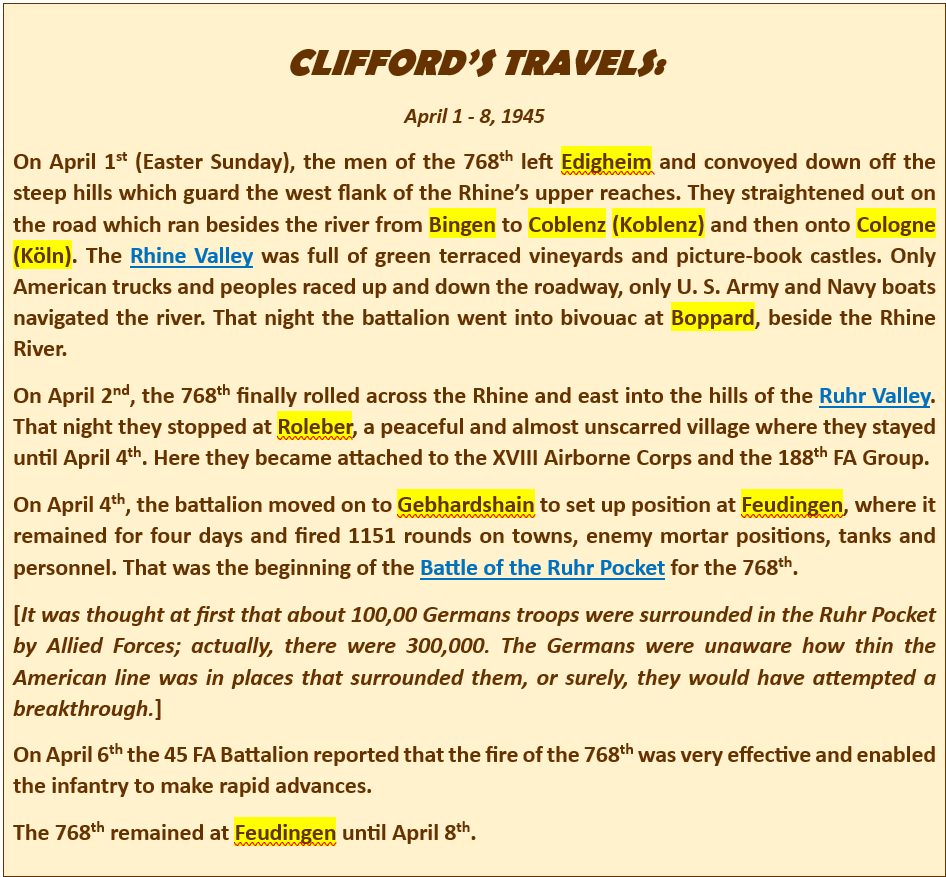Clifford's Travels:
Below is a record of the travels made by the 768th Field Artillery Battalion during WWII. The 768th FA Bn consisted of several batteries; including – a Headquarters, Service and three or four Artillery batteries (A, B, C & D) which operated mobilized (tractor drawn) 155mm Howitzers at the end of the war in Europe in 1945. The 768th was alone battalion which meant it would be sent to wherever it was most needed and so was transferred frequently between armies to fire in support of the advancing infantries. The entire battalion consisted of approximately 500 soldiers. Clifford Maxwell served in the Headquarters Battery.
The information presented here has been derived from three sources:
‘Destructive: A History of the 768th Field Artillery Battalion’;
‘History of the Medical Detachment, 768th FA BN’;
and the V-Mails and letters Clifford Maxwell had sent home to his folks during the war.
January 28 – 30, 1945
The 768th FA battalion, now attached to the XXI Corps, 30th FA Group, left Swanage, England on the morning of January 28, 1945 and spent the night at the Weymouth assembly area. They embarked on LST’s (Landing Ship Tanks) and LCI’s (Landing Craft Infantry) for France on January 30, 1945.
January 31 – February 12, 1945
After arriving at Le Havre, France on the morning of January 31, 1945, the battalion travelled to Camp Twenty Grand (near Duclair, in the vicinity of Rouen, France). The battalion remained at Camp Twenty Grand from February 1 to February 12, 1945. Camp Twenty Grand was one of nine ‘Cigarette camps’ located in France – they were tent cities sometimes referred to as ‘Repo Depos’ by the GI’s. The men stayed in pyramidal tents and were confined to base (except for some who got out on work details and errands) awaiting movement to the front under the 15th Army.
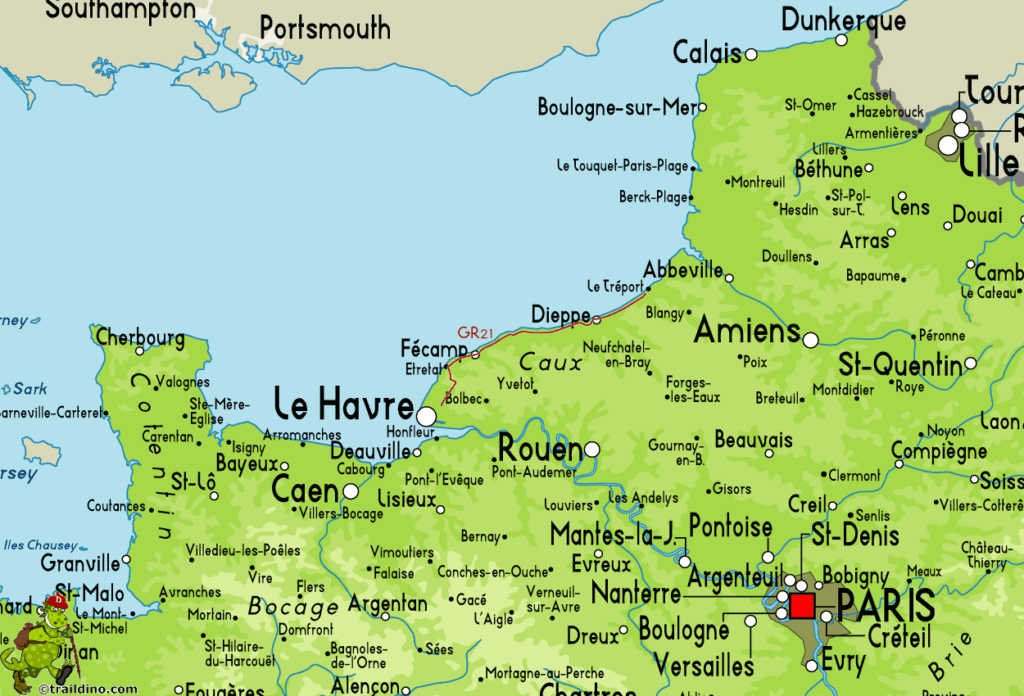
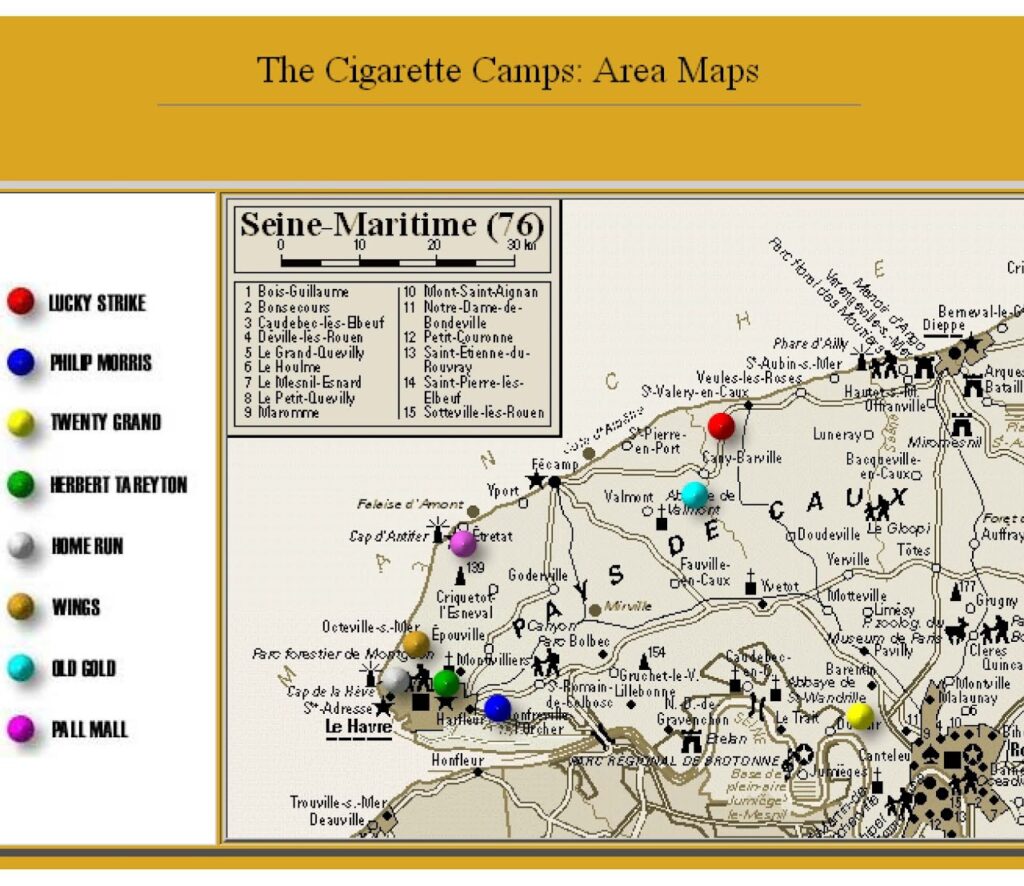
February 13 – 15, 1945
On February 13, 1945, the main body of the 768th Field Artillery battalion left Camp Twenty Grand, France by convoy travelling for three days (more than 300 miles) reaching the front at Heistern, Germany on the night of February 15, 1945.
The ride across Northern France and into Belgium was uneventful and took place in good weather for that time of year. The battalion made bivouac the first night at Cambrai, France and the second night at Namur, Belgium (except for the advanced party, consisting mainly of Headquarters Battery, which spent the second night at Liege, Belgium*).
On the afternoon of February 15, the 768th crossed the border from Belgium into Germany, near the town of Aachen.
[ The Germans had put up a stubborn defense of the city, as Aachen was the first sizable town that the Americans would capture that was actually in Germany, a part of the Siegfried Line. The Battle of Aachen (Sept. 12 – Oct. 21, 1944) had been intense. With bombs and artillery, the Americans won by completely destroying Aachen; not a building was unmarked, rubble was everywhere. ]
That night the convoy slipped through smaller ruined towns east and southeast of Aachen until it reached Heistern, Germany on a hill above Eschweiler. Heistern was no longer a town. Its buildings were run-down, there was no water or electricity, and what walls and roofs remained were full of holes. Not a single German, citizen or soldier, was found in the place.
*Clifford’s letter dated 2/19/45 mentions he had been to Liege, Belgium. His return address indicates he was in the HQ Battery which had spent the night at Liege.
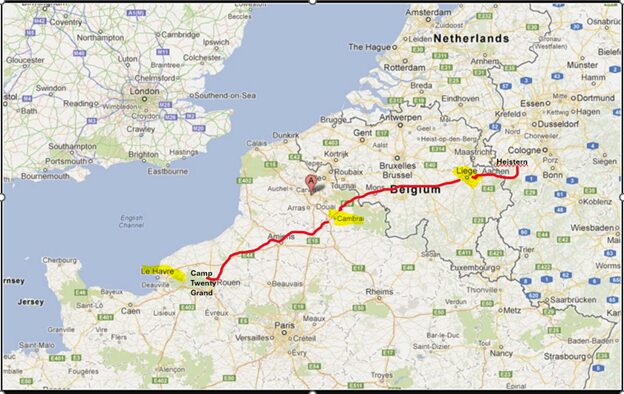
February 15 – 24, 1945
Now assigned to the First Army, VII Corps, 18th FA Group, the battalion remained in Heistern, Germany until February 24, 1945.
At Heistern, the 768th fired its first shot in combat. Battery B registered on Check Point Number One at 1504 on February 16. The next day, February 17th, beginning at 1742, the battalion fired its first mission.
The main entertainment at Heistern was provided by the anti-aircraft batteries in the vicinity who fired frequently on high flying German planes – to keep them high! At night, the gunfire, tracers and shell bursts were quite a spectacle for the men.
[ While at Heistern, the 768th was visited by Major General J Lawton Collins, commanding the VII Corps, and Brigadier General Palmer. Major Willard A McDonald, commander of the 768th, was promoted to Lieutenant Colonel. ]
During this time, American forces along the Roer River were waiting for the stream to subside. German forces had destroyed dams in the river’s headwaters creating a flood to delay the Americans from crossing the Roer and advancing on the German city of Cologne.
February 23 – 24, 1945
After the floodwaters receded, in the early morning of February 23rd, the Allied artillery massed on the west side of the Roer, (including the 768th, whose position was opposite the city of Duren) and cut loose with a terrific barrage. That day and night, American infantry and armor (VII Corps +) crossed the Roer, took Duren, and began to fan out across the level plain of Cologne.
On the evening of the 24th, the 768th moved out of Heistern and up to the village of Rolsdorf, still on the west bank of the Roer, about 2 miles from Duren. As they moved, German aircraft strafed the column’s tail, but no injuries were reported.
February 25 – 26, 1945
While stationed at Rolsdorf, Germany, the 768th sustained its first casualties.
On February 25th at about 1630, while flying in the vicinity of Duren, First Lieutenant Alvin N Parker, liaison pilot, and Second Lieutenant William T Morton, Jr., air observer, were killed in action by a burst of enemy flak.
On February 26th at about 1330, Captain Paul S Rice and Lieutenant George S Isham were wounded in action by shell fragments while on reconnaissance in the vicinity of Rommelsheim, on the east side of the Roer.
February 27 – March 3, 1945
On February 27 at 1025, the 768th crossed the Roer (to the east side) and took up positions at Binsfeld, Germany, a battered little village on the Cologne plain, recently taken and still smoking in places. The battalion spent the night there.
The next day, February 28th, the battalion moved up to Geilrath, Germany. (A few vehicles became lost and spent the night in Mannheim, Germany.)
At Geilrath, the 768th had its first contact with German civilians and took its first prisoner.
[ A German woman, found wandering in the vicinity of B Battery’s position, was brought to the Battalion Command Post, interrogated by Major Drury, and sent to the CIC at Heppendorf. Her mission had been concern about the welfare of her livestock left in the wake of battle. The cows suffered as much as any animals because of the war. The owners fled, and the cows missed their regular milkings. The men of the 768th that had been raised on farms took this to heart and did what they could to relieve the animals of their burdens. ]
March 3 – 8, 1945
On March 3rd, the 768th left Geilrath and moved to Sindorf, Germany, another beat-up village.
The next day, March 4th, Glessen, Germany was the next stop.
[ At Glessen, for the first time, the 768th FA Battalion encountered Germans still in their homes. The Germans were ordered out of their homes to provide shelter for the 768th. No friction or fraternization was noticed between the soldiers and civilians. Some clothes were washed and other services performed by the German civilians who were anxious to please. The men of the 768th became convinced that Germans aren’t hard to get along with after you kick the stuffing out of them and are holding a weapon on them. ]
On March 6th, the 768th moved to Widderdorf, Germany, within sight of the spires of the Cologne cathedral and the Hohenzoliern bridge across the Rhine. Most citizens were in their homes, and some had to be moved, or surrender their beds.
[ Citizens had already begun the work of repairing their roofs and walls indicating they thought the war was over, as least as far as they were concerned. The Americans would not shell them again – the Germans couldn’t. ]
News came through that the American First Army had captured the Ludendorf bridge at Remagen, Germany intact. All reconnaissance and preparations were completed for moving the 768th across the Rhine River when on March 8th a < no move tomorrow > order was received.
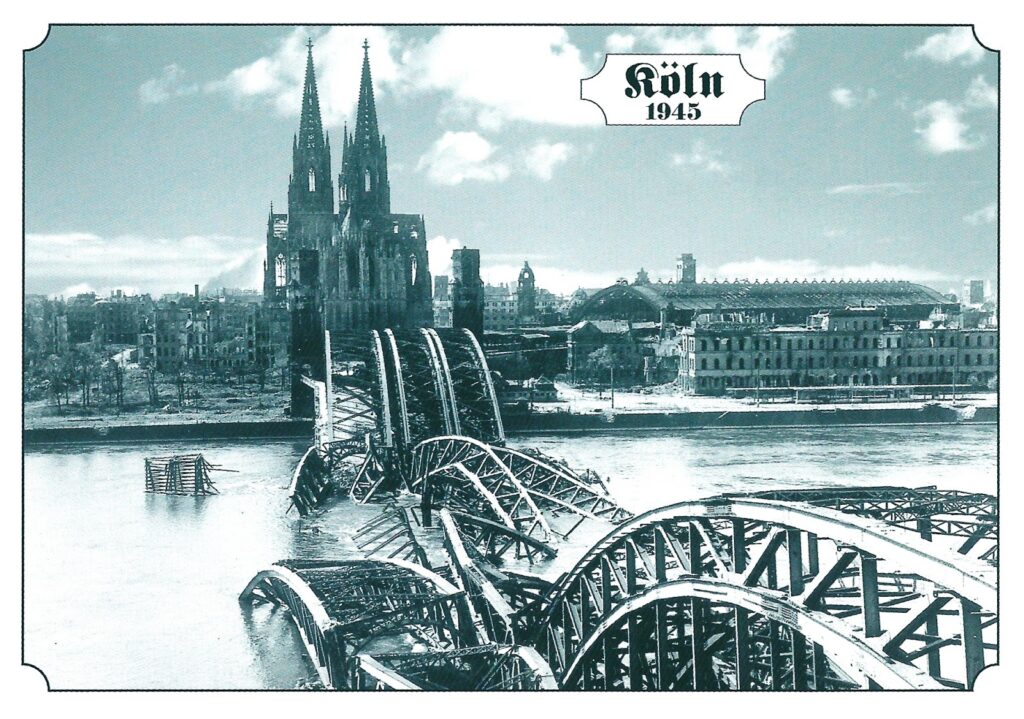
March 9 – 16, 1945
On March 9th, the 768th was ordered to <not cross the Rhine> move back through Belgium and Luxembourg to Woelfling, France, a 325 mile trip.
They would now be under the Seventh Army, XV Corps, 173rd FA Group.
En route to Woelfling, the battalion spent one night in a schoolhouse at Marche, Belgium and another night in a thoroughly wrecked and filthy barracks building at Verdun, France.
[Woelfling was an Alsatian village where the inhabitants kept their livestock – horses, cattle and sheep – in the houses, and piled the manure in great heaps at their front doorsteps. It was mid-March, and the weather was becoming warmer, but the streets were ankle-deep in mud and filth, and the odors . . . . The fields near town were better; the grass was green, and one could remain a safe distance from the occasional rotting carcasses of long-dead horses which dotted the landscape.]
The battalion remained in this position, firing in support of the 45th Inf. Division, until March 17th. East of Woelfling lay the Saar Valley and the Siegfried Line.
